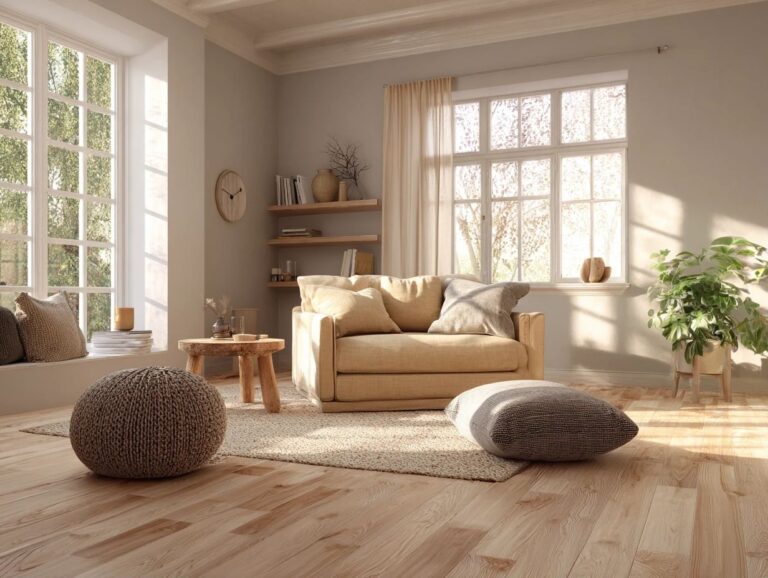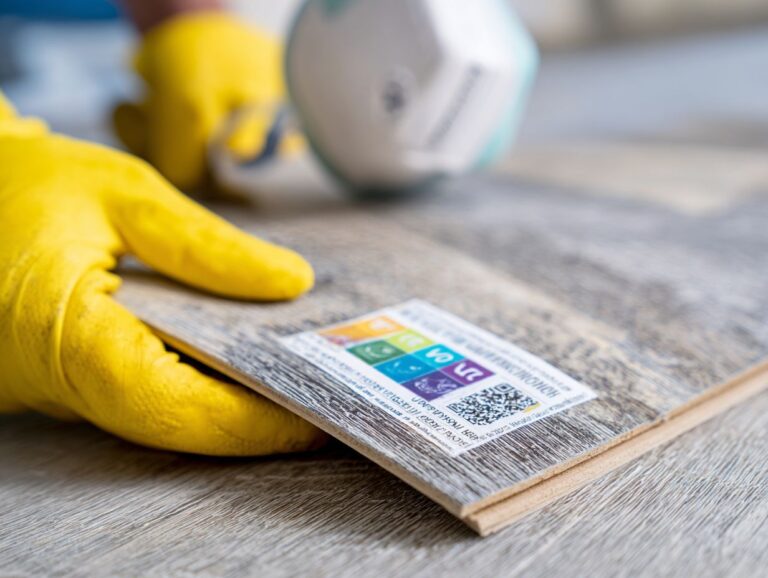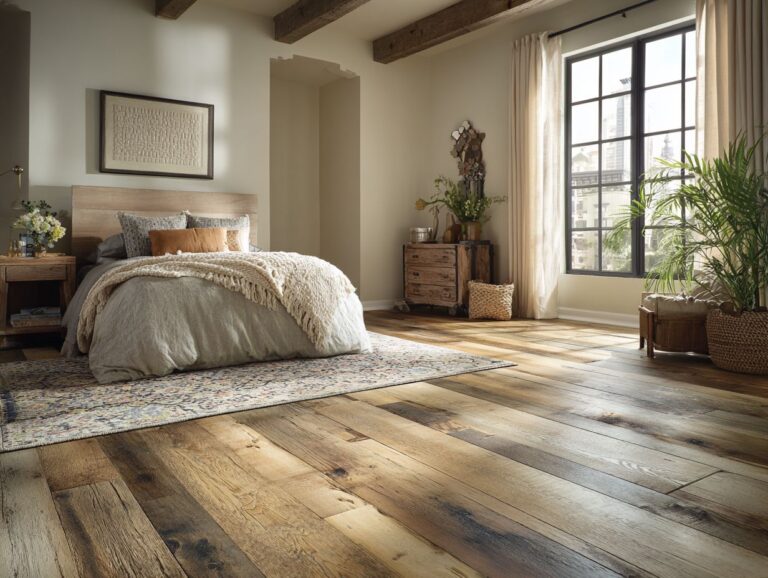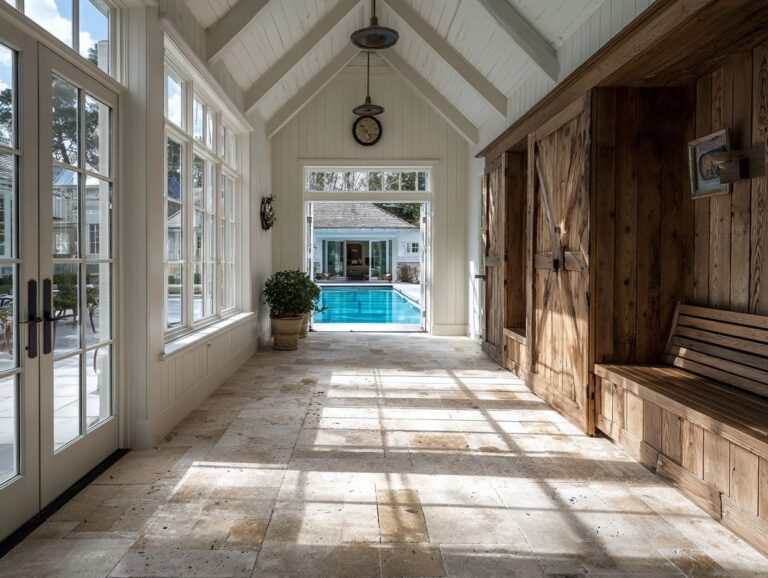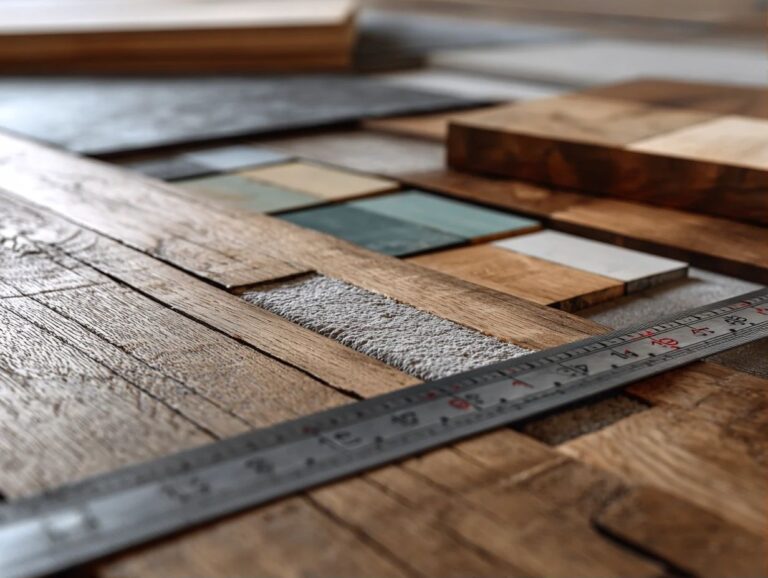Oak vs Maple vs Cherry Flooring – Which Wood is Best?
Contents
- Introduction
- Characteristics of Oak Flooring
- Characteristics of Maple Flooring
- Characteristics of Cherry Flooring
- Comparative Analysis
- Hardwood Flooring Market Changes and Comparison
- Environmental Impact
- Frequently Asked Questions
- 1. What are the main differences between oak, maple, and cherry flooring?
- 2. Which wood is best for high-traffic areas?
- 3. Which wood is best for a warmer or cooler color scheme?
- 4. Is one wood more eco-friendly than the others?
- 5. Which wood is best for homes with pets?
- 6. Can I mix different types of wood flooring in my home?
Introduction
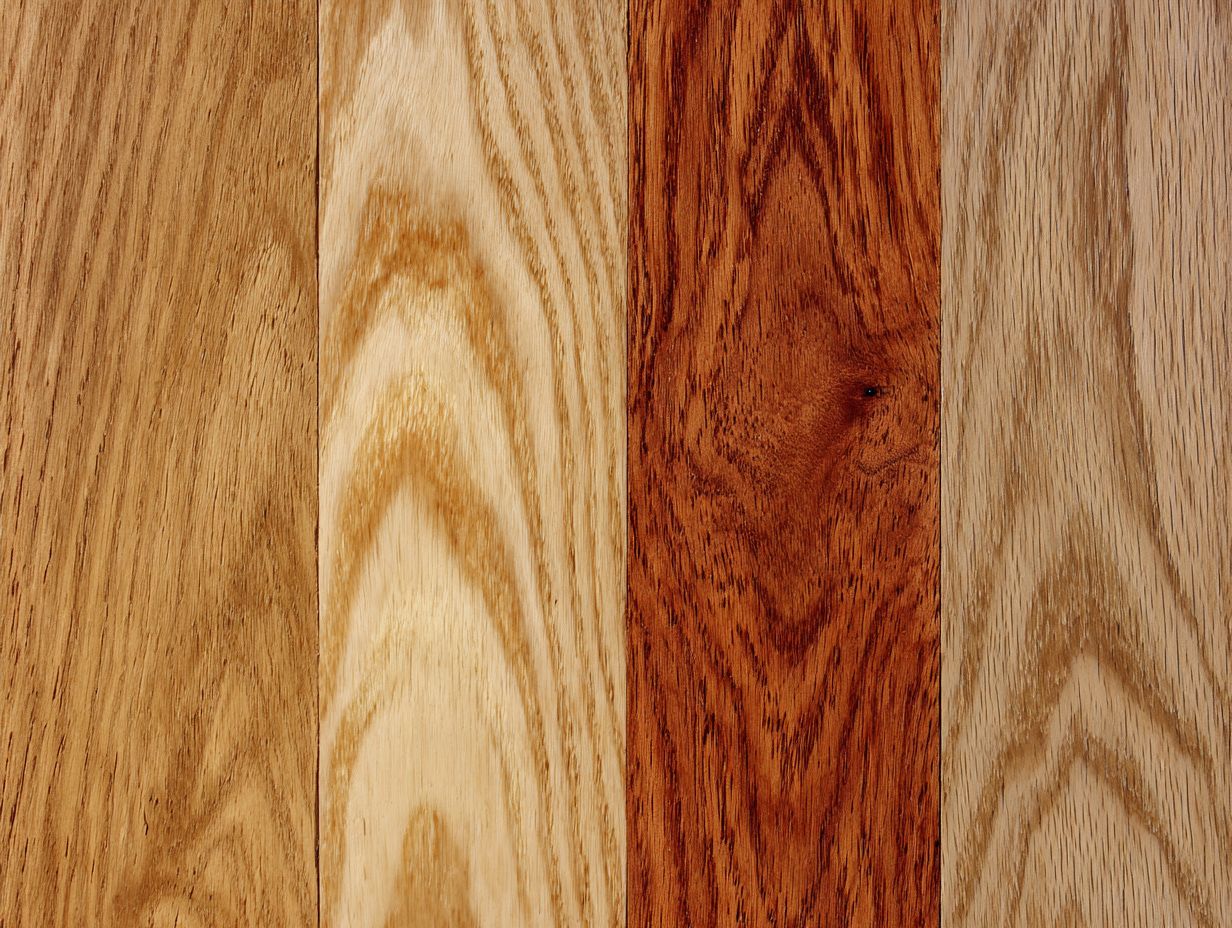
Key Takeaways:
Overview of Wood Flooring Options
The hardwood flooring market offers a variety of species, each with unique characteristics, including:
- Maple
- Cherry
- Oak
Catering to various aesthetic and functional needs.
Maple is durable and withstands wear, making it a good choice for areas with a lot of activity. It typically features a light, modern look that complements contemporary designs.
Cherry, with its rich, warm tones, lends a classic elegance to any space and is popular in traditional homes.
Oak is special because it comes in red and white varieties, fitting both relaxed and formal settings.
Consider your space’s style and function when selecting the right wood species to maximize both beauty and utility.
Importance of Choosing the Right Wood
Choosing the right wood for flooring improves the look of your room and impacts how long it lasts and how much upkeep it needs.
Different wood types offer unique benefits:
- Oak is very strong and can withstand a lot of use, so it works well in busy areas.
- Maple brings a lighter, contemporary feel with a smooth grain.
- If you’re considering aesthetics, Walnut’s deep, rich tones create a luxurious vibe, but be aware it may require more upkeep due to its susceptibility to dents.
- Exotic woods like Teak are beautiful and water-resistant, though they often come with higher costs and ethical considerations.
In the end, choosing the right wood means looking at the maintenance expenses against the initial price.
Characteristics of Oak Flooring
Oak flooring is a favorite among homeowners due to its durability and timeless appeal. It’s a wise option for refreshing home interiors.
Durability and Hardness
Oak has a Janka hardness rating of 1290, which means it can handle lots of foot traffic. This makes it a good choice for homes and businesses.
This durability makes Oak an excellent choice for hallways, living rooms, and even retail environments.
For instance, Oak flooring can retain its finish in busy family homes where kids and pets run freely, reducing the need for frequent replacements.
In comparison, alternatives like Maple (Janka rating 1450) tend to be harder but may not offer the same aesthetic warmth.
On the other hand, softer woods like Pine (Janka rating 690) dent easily, so they are not the best choice for areas with a lot of foot traffic.
Oak is a strong and durable choice for many uses.
Appearance and Grain Patterns
Oak’s distinct grain patterns and warm tones add character to any room, with variations that can suit rustic and modern designs alike.
For interior design projects, oak flooring has been successfully integrated in various settings.
For instance, a cozy cabin-style home may highlight oak’s rich, knotted texture alongside a stone fireplace, creating a warm, inviting atmosphere.
In contrast, a sleek, modern loft can benefit from light, more uniform oak finishes that complement minimalist furniture and bright, open spaces.
A matte finish on oak highlights its natural look and makes it more durable, making it perfect for high-traffic areas like living rooms or hallways.
Cost Considerations
Typically ranging from $3 to $8 per square foot, the cost of Oak flooring can vary significantly based on quality and source.
Along with the material cost, installation can add $2 to $5 per square foot, depending on the complexity of the job.
Maintenance costs, such as refinishing every 5 to 10 years, can range from $1 to $3 per square foot. Comparatively, other hardwoods like Maple or Hickory may cost slightly less initially, but their maintenance can often exceed that of Oak due to differing durability.
Thus, while Oak may have a higher upfront cost, its longevity can offset long-term expenses.
Characteristics of Maple Flooring
Maple is known for its light color and smooth finish, making it popular for modern spaces that desire a clean and neat look.
Durability and Hardness
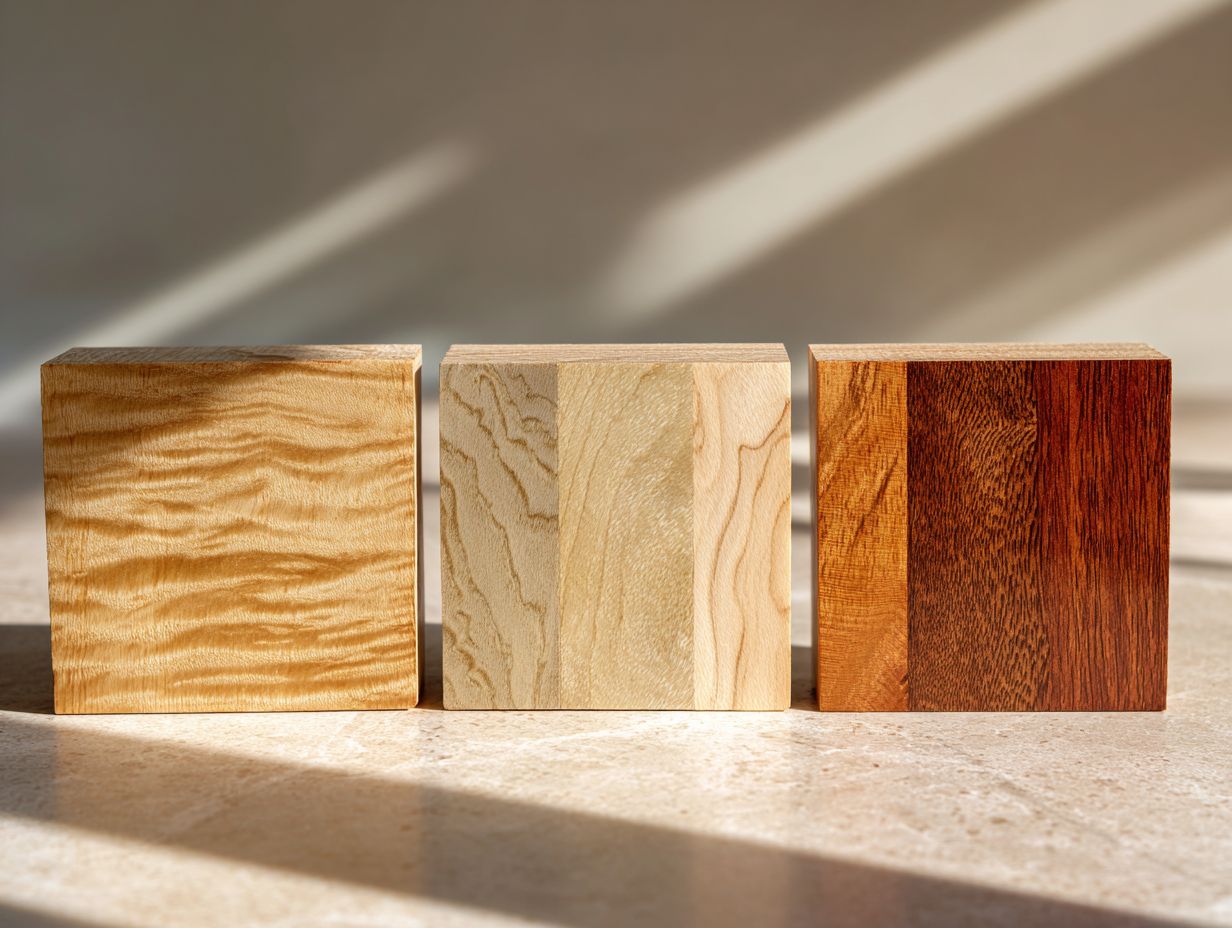
Maple has a Janka hardness rating of 1450, which means it is stronger than Oak. This makes it a great choice for families with busy lives.
Maple is durable and resists wear well, making it a good choice for busy areas like hallways and dining rooms.
For comparison, Oak has a rating of 1290, which, although strong, may show marks more easily in busy areas. Meanwhile, Cherry wood, with a Janka rating of 950, can dent and scratch more easily, so it may not be the best choice for busy homes.
Therefore, families should consider Maple for flooring or furniture, ensuring longevity and low maintenance.
Appearance and Grain Patterns
Maple’s fine pattern and light color make it suitable for different design styles, from simple to country.
Its light, warm tones complement both contemporary and traditional interiors. For example, a modern kitchen with white cabinets and stainless steel features can use Maple flooring to add natural warmth, making the materials feel softer.
In a rustic-themed living room, reclaimed wood furniture paired with Maple flooring creates a cohesive look, with the flooring’s fine grain details adding visual interest.
Maple comes in various finishes, from matte to glossy, allowing homeowners to customize the sheen to match their decor preferences.
Cost Considerations
Maple flooring generally costs between $4 and $9 per square foot, influenced by region and finish options.
For installation, expect fees between $2 to $5 per square foot, depending on the complexity of the job.
In contrast, Oak can range from $3 to $7, while Cherry typically falls between $5 and $10. When planning your budget, remember to account for regular maintenance expenses, such as refinishing every 5-10 years.
Maple’s lighter color may need less frequent refinishing than darker woods, potentially saving costs in the long run. Budget-minded homeowners should weigh the initial investment against durability and upkeep over time.
Characteristics of Cherry Flooring
Cherry flooring is well-known for its deep color and cozy feel, popular for classic and stylish home designs.
Durability and Hardness
Cherry has a Janka hardness rating of 950, which, while lower than Oak and Maple, still offers respectable durability for residential use.
This makes Cherry suitable for areas with moderate foot traffic, such as living rooms and bedrooms. In comparison, Oak, rated at 1,290, and Maple at 1,450, are better suited for high-traffic areas like hallways and kitchens.
While Cherry displays stunning color and grain patterns that mature beautifully over time, it may dent more easily, especially under heavy furniture. To make it last longer, try adding a strong protective coating or placing area rugs to control wear in crowded areas.
Appearance and Grain Patterns
The rich reddish-brown hue of Cherry flooring deepens with age, adding depth and beauty to spaces over time.
This color change makes rooms look better, creating a warm and inviting atmosphere. Cherry flooring features distinctive grain patterns, often characterized by a smooth, uniform texture with occasional swirls and streaks.
Think about how Cherry flooring works well with both classic and modern design styles. For example, it looks great with creamy whites and warm neutrals in a country-style kitchen or stands out nicely against bright colors in a modern living room.
Using design apps like Roomstyler can help visualize these combinations as you plan your space.
Cost Considerations
Cherry flooring typically costs between $5 and $10 per square foot, varying based on finish and supplier.
While Cherry flooring is priced competitively, its long-term value often exceeds that of Maple and Oak. For instance, Cherry’s rich, warm tones become more appealing as they age, potentially increasing your home’s resale value.
In comparison, Maple ranges from $3 to $6 per square foot and Oak from $4 to $7. Even though Maple may cost less at first, it does not have the unique charm that makes Cherry attractive to those who want elegance.
Consider these things when picking your flooring, since how it looks and how long it lasts can lead to better value later on.
Comparative Analysis
A detailed comparison of Oak, Maple, and Cherry flooring shows important differences in strength, appearance, and price that can affect your choice.
Hardwood Flooring Market Changes and Comparison
Hardwood Flooring Market Changes and Comparison
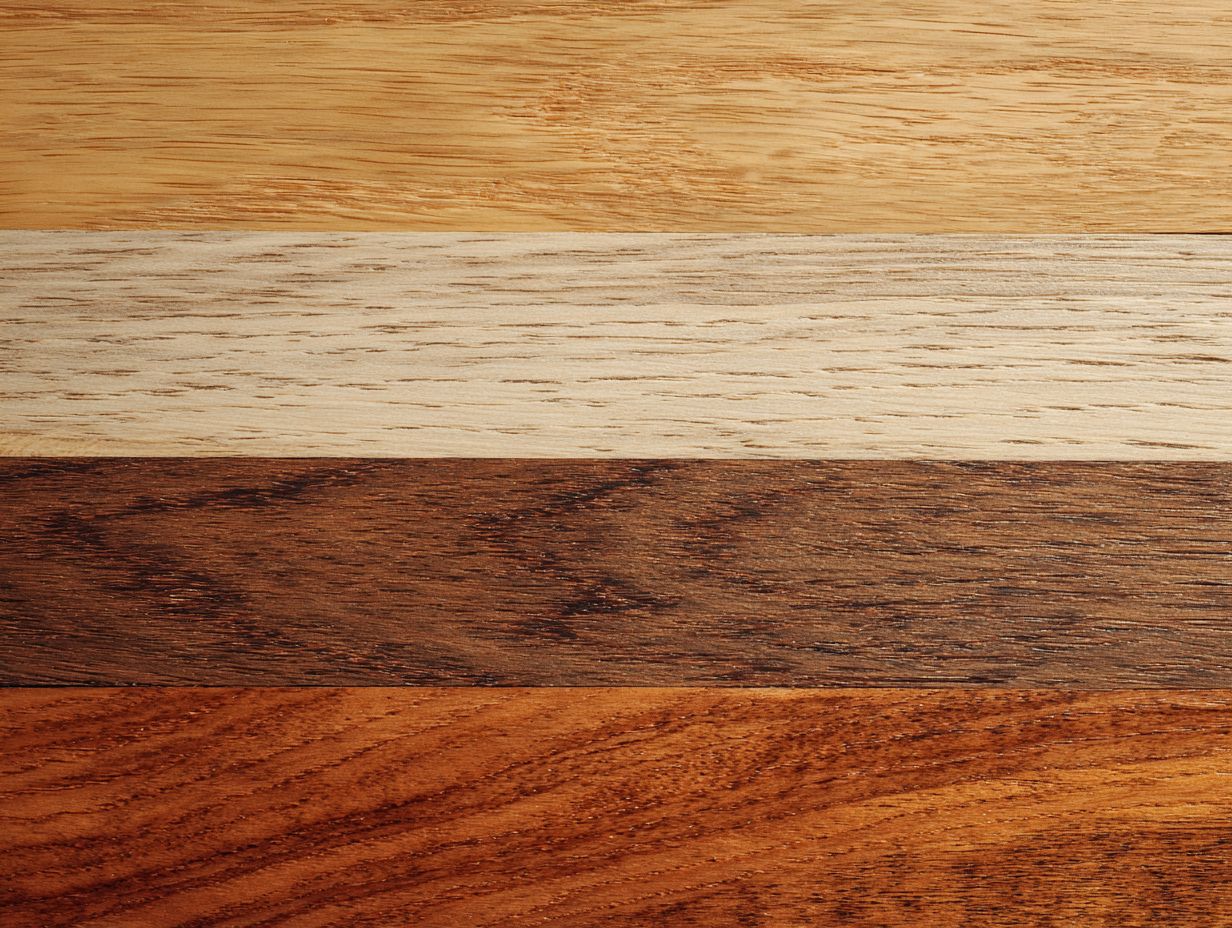
The Hardwood Flooring Market Changes and Comparison The data shows changes in market share and sales in the hardwood flooring industry during 2022. This information is key for knowing market trends and making smart decisions for companies in this area.
Market Share and Sales metrics highlight significant changes in 2022.
- Revenue and Volume Decline: The hardwood flooring market experienced a 9.8% decline in revenue and an 11.2% decline in volume. These decreases indicate challenges such as increased competition, shifts in consumer preferences, or economic factors affecting purchasing power.
Despite these declines, hardwood flooring maintained a notable presence within the broader flooring market:
- Share of Flooring Market: Hardwood flooring constituted 8.6% of total flooring sales and 4.7% of the total flooring volume. This suggests that, while experiencing declines, hardwood flooring retains a significant market segment in terms of revenue compared to volume, possibly due to its higher price point relative to other flooring types.
- Share within Hard Surface Flooring: Within the hard surface flooring category, hardwood accounted for 14.1% of sales and 8.6% of volume. This indicates its competitive positioning among other hard surface options like laminate or vinyl, which might be preferred for their cost-effectiveness or durability in certain applications.
The Hardwood Flooring Market Changes and Comparison data reveals challenges and opportunities for the hardwood flooring industry. Even though revenue and volume have decreased, the sector remains influential in the hard surface flooring market, showing opportunities for specific plans to improve market standing. Grasping these changes helps companies move through the competitive market and change their products to fit changing consumer tastes and market needs.
Durability Comparison
When ranked by Janka hardness scores, Oak leads at 1290, followed closely by Maple at 1450, with Cherry at a lower 950.
Oak’s durability makes it an excellent choice for flooring and furniture, particularly in high-traffic areas. Its resistance to wear and denting helps maintain aesthetics over time.
Maple wood, known for its strong and hard nature, is commonly chosen for sports surfaces such as bowling lanes and gym floors, where it needs to resist heavy use.
Cherry wood is softer, but people appreciate its deep color and smooth texture, which makes it ideal for cabinets and high-quality woodworking.
Each wood type serves distinct applications based on both its hardness and visual appeal.
Aesthetic Appeal Comparison
In terms of aesthetic appeal, Oak offers classic charm, Maple provides a modern look, and Cherry adds warmth to traditional designs.
Each type of wood matches different design ideas.
Oak, known for its strong grain, adds character to rustic interiors and classic furniture styles, commonly found in traditional kitchens and dining rooms.
Maple, appreciated for its smooth texture and light color, works well in modern designs and is often used in simple furniture.
Cherry wood is known for its rich red color that becomes even deeper as time passes, making it a favored option for stylish cabinets or furniture that has a timeless look.
When choosing, consider both your existing decor and the mood you want to create in your space.
Cost Comparison
The cost analysis shows Oak ranging from $3-$8, Maple $4-$9, and Cherry $5-$10 per square foot, highlighting the need for budget considerations.
When evaluating these options, consider installation and maintenance. Oak, while initially less expensive, may require more frequent refinishing, adding to long-term costs.
Maple might be a bit more expensive, but it is long-lasting and needs less maintenance, which increases its worth over time. Cherry, the most expensive at first glance, provides a rich aesthetic and resistance to wear, potentially minimizing replacement costs.
Weigh these factors based on your budget and expected use, ensuring you choose a wood type that aligns with both immediate financial constraints and long-term investment goals.
Environmental Impact
It’s important to know the environmental effects of choosing hardwood flooring because sustainability practices differ greatly between types of wood.
Sustainability of Oak
Oak comes from responsibly managed forests, and it’s an environmentally friendly option when approved by groups like the Forest Stewardship Council (FSC).
Choosing oak from FSC-certified forests is beneficial for both the environment and the economy. Statistics show that FSC certification helps protect over 200 million acres of forest globally, promoting biodiversity and reducing deforestation.
Choosing sustainable oak helps these practices and improves product quality and durability. For instance, furniture made from sustainably sourced oak tends to have a longer lifespan, offering better value over time.
These methods support a healthier environment and promote responsible forestry, making oak a good option for buyers.
Sustainability of Maple
Maple is often harvested from sustainably managed forests, promoting environmental responsibility in flooring production.
These forests typically adhere to strict standards set by organizations like the Forest Stewardship Council (FSC), ensuring that biodiversity is preserved, and ecosystems remain healthy.
Many manufacturers source their maple locally, which significantly reduces transportation emissions and the overall carbon footprint. When you choose products with Sustainable Forestry Initiative (SFI) certification, you support responsible forest care and promote the use of resources that can be renewed.
By opting for locally sourced, certified maple flooring, consumers can make a positive impact on the environment while enhancing their living spaces.
Sustainability of Cherry
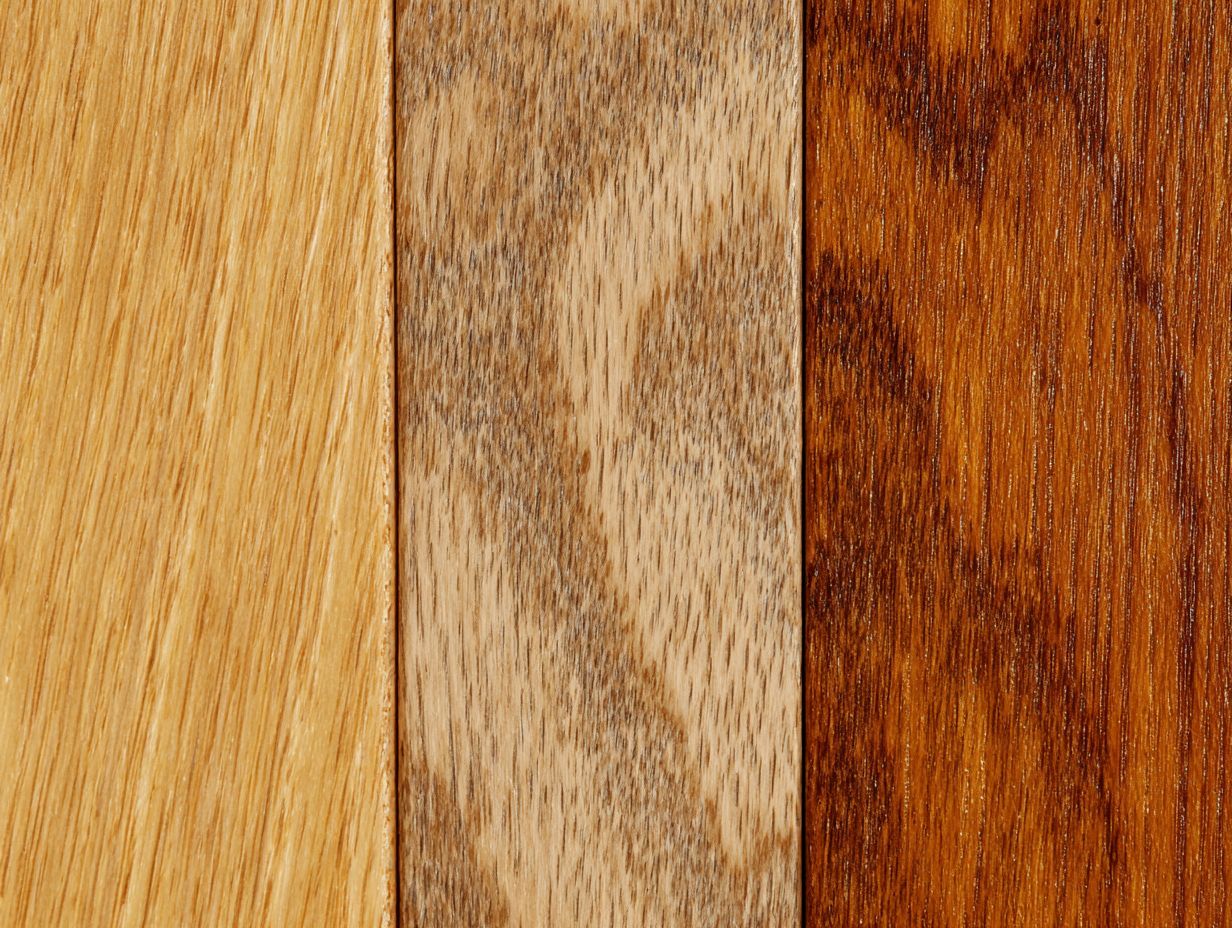
Cherry, while beautiful, is often sourced from regions with less stringent logging practices, raising concerns about sustainability.
To make responsible purchases, buyers should check for labels like the Forest Stewardship Council (FSC), which confirms that the materials come from sustainable sources.
Consider purchasing from companies that disclose their supply chain practices and prioritize local sourcing to minimize environmental impact.
You can also opt for reclaimed cherry wood, which reduces the demand for newly harvested trees. Engaging with retailers who actively participate in reforestation initiatives can further support sustainable forestry efforts, eliminating reliance on non-ethical sourcing methods.
Final Recommendations
For families looking for long-lasting materials, Maple stands out as the best option. Those who care more about looks might choose Cherry or Oak for their classic style.
Maple is well-known for being tough against dents and scratches, so it’s perfect for homes with kids or pets.
In contrast, Cherry wood offers a rich, warm color that deepens over time, perfect for creating a cozy atmosphere.
Oak, known for its prominent grain and natural beauty, is often favored for traditional styles and can be stained to suit various decors.
When selecting furniture, think about its location: sturdy Maple is good for busy areas, while Cherry and Oak look nice in living rooms. For a deeper understanding of how these choices might complement your home’s design, you may find our Complete Guide to Hardwood Flooring Types and Species helpful.
Frequently Asked Questions
1. What are the main differences between oak, maple, and cherry flooring?
Oak, maple, and cherry are all popular choices for hardwood flooring, but each has its own unique characteristics. Oak is known for its durability and classic, traditional look. Maple is a bit harder and has a more contemporary, modern feel. Cherry has a warm, rich color and a more luxurious appearance.
2. Which wood is best for high-traffic areas?
Oak is the most durable of the three. Its density and hardness make it ideal for high-traffic areas such as hallways and living rooms. Maple and cherry are also durable options, but may not hold up as well over time in heavily used areas.
3. Which wood is best for a warmer or cooler color scheme?
If you want a warmer color scheme, cherry is a great option. Its reddish-brown tones add warmth to any room. On the other hand, if you prefer a cooler color scheme, maple is a good choice. Its light, creamy color can help balance out warm colors in a room.
4. Is one wood more eco-friendly than the others?
All three woods are considered eco-friendly options, as they are natural, renewable resources. Oak and maple trees are usually obtained from forests that are managed to be sustainable, making them a bit better for the environment compared to cherry trees, which might not always be collected from such forests.
5. Which wood is best for homes with pets?
If you have pets in your home, oak is likely the best choice. This wood is the most resistant to scratches among the three, so it holds up better against pet claws. Maple and cherry are still durable options, but may show scratches more easily.
6. Can I mix different types of wood flooring in my home?
Absolutely! In fact, mixing wood flooring can add visual interest and dimension to your home. Just make sure to choose woods that complement each other in terms of color and style. For example, you could use oak in high-traffic areas and cherry in a more formal living or dining room.
